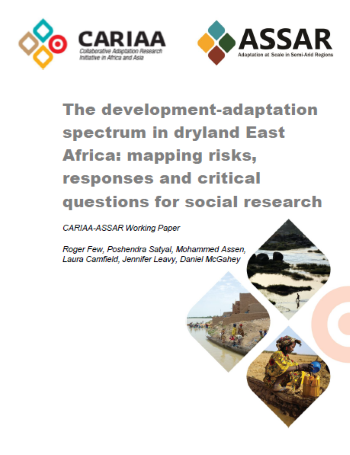The development-adaptation spectrum in dryland East Africa: mapping risks, responses and critical questions for social research

Semi-arid regions across the world face high potential impacts of climate change, but the risks posed by a changing climate interconnect with a web of related risks and dynamics. The drylands of East Africa, in particular, are crucibles of change in terms of patterns of land and water access and use, natural resource degradation, human development, economic opportunity, social and gender stratification, migration and urbanisation. Both risks and the responses to them should therefore be understood as located within a sphere of activity in which adaptation and development merge.
This new ASSAR working paper reviews responses to climate-related social-ecological risks in semi-arid areas of East Africa, in order to lay out an agenda for future critical research. By drawing on a wide range of academic and non-academic sources, the paper maps out the main forms of response to the inter-linked risks in the region, and considers how they might be viewed in terms of a spectrum of development-adaptation actions. In doing so, the discussion highlights key implications of existing and potential responses for people’s livelihoods and wellbeing, particularly in terms of equity and sustainability, and identifies a series of critical questions that need to be posed about response options both within research and practice.
|
|
